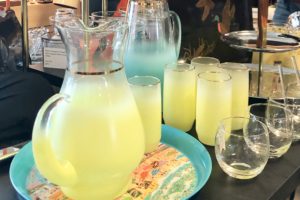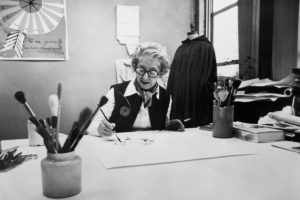Curtis Jeré: Mid-Century Modern Metal Sculpture from Artisan House
Who was Curtis Jeré?
There are thousands of artisan metalworks bearing the signature C. Jeré, beginning in the 1960s. Who was this mystery person, and where did he come from?
C. Jeré is the joint signature of brothers-in-law Jerry Fels and Curtis “Kurt” Freiler whom started a metalwork company called Artisan House in 1964 that was so successful so quickly, that even after selling the company just eight years later in 1972, Artisan House is still in business today creating contemporary metalworks with the signature C. Jeré.
Freiler had been a manager in a German factory when he fled Nazi Germany in 1938. It was his father’s goal to someday have his own factory, according to his son, Robbie Freiler, as reported by Kathryn Drury Wagner for her article published in Costume Jewelry Collectors International (CJCI). When Freiler moved to California, he met Jerry Fels.

Born in Brooklyn, New York, Fels studied at the Arts Student League and the National Academy of Design. He was working as a creative director at Gertz department store before leaving to serve as a fighter pilot during World War II.
The two men met in California in the 1940s, became fast friends and ended up marrying sisters. They began tinkering and making copper things to sell at a local famers’ market. The jewelry pieces sold very well. Soon, the jewelry company Renoir of Hollywood was born, which later became Renoir of California in 1948. The copper and enamel jewelry pieces made by Renoir are highly collectable today.
According to Peter Fels, son of Jerry Fels, as he told Wagner for CJCI, on-going legal battles to fight copyright infringements by other companies combined with labor-intensive methods used to produce some of their most popular goods eventually bankrupted the company. “Kurt and my dad were left with their tools and the buildings,” says Peter.
So the two began again, opening Artisan House in 1964. Combining their ability to work with metals and their almost two decades of business experience together, they set out to create “gallery-quality art for the masses.” The C. Jeré signed pieces were quickly picked-up by high-end department stores like Raymor of New York and Gump’s in San Francisco.
The C. Jeré works produced from 1964-1972 are highly prized. One of the most recognizable pieces by the company is the Raindrop Tree from 1968 (see image). But they explored more than just copper, brass and steel – they employed enameling, resin pouring, and bronze and aluminum casting. The 1969 brutalist cast aluminum Owl Sculpture with resin eyeballs and brass detailing perched on a raw wood stump illustrates the many technical capabilities of Artisan House coming together in a single piece.
The large wall pieces and free-standing sculptures from the 1960s and 1970s currently bring prices in the thousands. They feel right at home in California modern environments, and with the stronghold mid-century modern design has in our current vernacular, these pieces are well worth it.

















